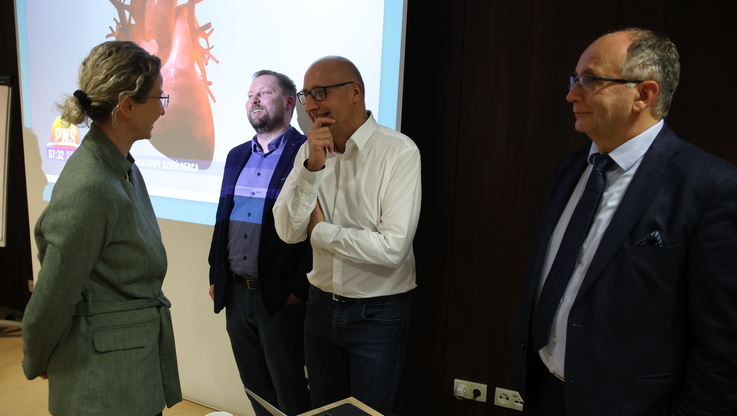Pobierz materiał i Publikuj za darmo
ESPON is a research programme covering all European Union Member States, the United Kingdom, Iceland, Liechtenstein, Norway and Switzerland. In collaboration with numerous academic and research centres, ESPON experts monitor, i.a., the demographic processes taking place in Europe. According to the most recent policy brief entitled “The ageing revolution: towards a European Silver Deal?”, these processes will constitute a major challenge across the entire continent in the decades to come.
Europe has been ageing for a long time and - according to ESPON experts - the process will only aggravate in the coming years. Older population (people aged over 65) is expected to increase from 90.5m in 2019 to 129.8 in 2050. During this period, it is projected that the number of persons aged 75-94 will increase by 56.1%, and persons aged 6-74 - by 16.6%. According to the analysts, the share of the oldest population (aged over 85) will double - from 12.5m in 2019 to 26.8m in 2050, while the number of hundred-year-old persons is likely to increase during this period from 96 600 in 2019 to nearly half a million.
“The European population is ageing rapidly, largely because of historically low fertility rates and increases in life expectancy, resulting from healthier living and improved healthcare,” convince the authors.
The intensity of population ageing differs quite noticeably between individual countries. According to data from Eurostat, in 2019, people aged over 65 accounted for 20% of the European population - the share was the highest in Italy (23%), and the lowest in Ireland (only 14%). Similar differences could be observed at the level of regions within one state - in the United Kingdom the proportion of older population in 2019 ranged between approx. 12% in London, to over 23% in some counties. In turn, in Germany the eastern lands of the former German Democratic Republic are characterised by a higher share of older population than in the other parts of the country. In all regions of the continent population ageing affects most of all the less populated, peripheral areas, often economically underdeveloped. As the authors of the Policy Brief convince, it results from the mass outmigration of younger people, who are leaving in search of job opportunities or a better quality of life.
How do the demographic prospects for the countries of Central and Eastern Europe, including Poland, look like? The ESPON Policy Brief is not optimistic. Although in the coming decades the percentage of older population will be lower than in many other countries, in particular in the southern part of the continent (approx. 21% in 2030 compared with over 25% in Italy or Greece), the dynamics of the ageing process in Polish, Czech or German societies will exceed the European average. It can be attributed to the projected zero population growth or even sub-replacement fertility rate, and to the fact that a lot of nationals of these countries, mainly working-age people, choose to live abroad.
Link to the Policy Brief: https://www.espon.eu
Źródło informacji: PAP MediaRoom
Pobierz materiał i Publikuj za darmo
bezpośredni link do materiału
| Data publikacji | 07.05.2021, 15:34 |
| Źródło informacji | PAP MediaRoom |
| Zastrzeżenie | Za materiał opublikowany w serwisie PAP MediaRoom odpowiedzialność ponosi – z zastrzeżeniem postanowień art. 42 ust. 2 ustawy prawo prasowe – jego nadawca, wskazany każdorazowo jako „źródło informacji”. Informacje podpisane źródłem „PAP MediaRoom” są opracowywane przez dziennikarzy PAP we współpracy z firmami lub instytucjami – w ramach umów na obsługę medialną. Wszystkie materiały opublikowane w serwisie PAP MediaRoom mogą być bezpłatnie wykorzystywane przez media. |




